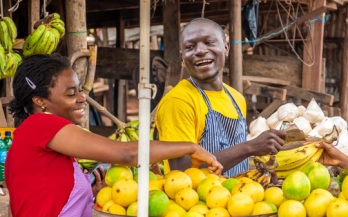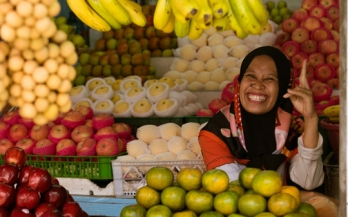Maternal nutrition has often been a neglected area and the global burden of maternal undernutrition in low-and middle-income countries remains staggeringly high. An estimated 450 million women have short stature, 240 million are underweight with a body mass index below 18.5, and 496 million are anaemic.
Ensuring markets provide enough nutritious and safe food to those living in poverty in low income countries is an urgent priority. Many in such markets across the world lack access to affordable foods that are safe and rich in the nutrients needed to sustain life and livelihoods.
In a blog a few days ago, I discussed a report released recently from Ceres2030, an initiative that aims to support governments to eliminate hunger while also improving diets, supporting livelihoods, and enhancing environmental sustainability by synthesising existing evidence on agricultural interventions and estimating the cost of achieving these interlinked goals by 2030
An additional USD 33 billion (60% from local citizens via taxes, 40% from official development assistance and donors) per year, from now to 2030, is needed to end hunger in a way that is sustainable for both the planet and the livelihoods of small-scale producers in low- and middle income countries.
In 2021 we nutrition champions are blessed with not one, but two summits to advance nutrition outcomes. The UN Food Systems Summit (FSS) will take place in September in New York and the Nutrition for Growth Summit will be held in Tokyo in December.
A few months ago, a new analysis came out with a shocking number: about 1.6 billion people could not afford a healthy, sustainable diet. A few weeks ago, the publication of the 2020 "State of Food Insecurity and Nutrition in the World" (SOFI) report further rocked the food and nutrition community with an even more startling number: an estimated 3 billion people could not afford a healthy diet.
My first exposure to the effects of malnutrition occurred in 1999 in central war-torn Angola. Due to the armed conflict, hundreds of thousands of internally displaced people (IDPs) were fleeing their homes and hunkering down in various camps huddled around the outskirts of the main town.
As the wide-ranging effects of COVID-19 combine with serious pre-existing environmental, social, political and economic strains, our food systems find themselves under unprecedented pressure. The silver lining is that this uniquely challenging context has prompted renewed focus on finding scalable solutions to protect lives, livelihoods and our planet.
The COVID-19 pandemic has affected almost every aspect of life, including how food is distributed, purchased and consumed. In low-income countries, consumers have had to contend with higher food prices and less fresh, nutritious food available to eat. While the pandemic has had a devastating short-term impact on all those who rely on local food systems, it has also exposed their underlying fragility.
From empty supermarket shelves to vegetables thrown away uneaten due to shutdowns, COVID-19 has revealed many vulnerabilities in global and local food systems. Not only that, but the pandemic has also reminded us of the essential role nutrition and food security play in boosting immunity and resistance to disease.










